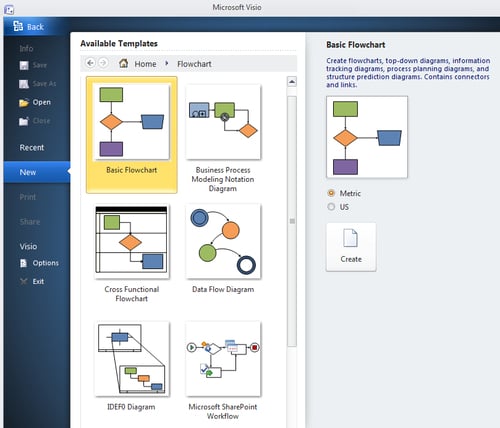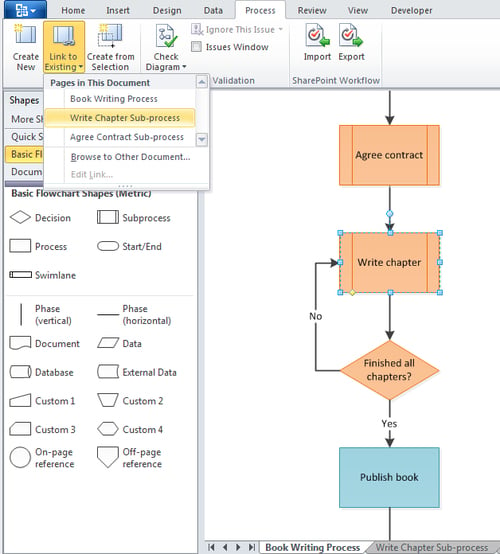Firstly, Microsoft Visio 2010 introduces the new Validation API for structured diagrams, and provides several examples of this in use, for example with the new BPMN Diagram and Microsoft SharePoint Workflow templates, and the improvements to the Basic Flowchart and Cross-Functional Flowchart templates, all of which are found in the Flowchart category.
Templates in Visio consist of a predefined Visio document that has one or more pages, and may have a series of docked stencils (usually positioned on the left-hand side of workspace area). The template document may have an associated list of add-ons that are active whilst it is in use, and, with Visio 2010 Premium Edition, an associated list of structured diagram validation rule sets as well.

Secondly, the concept of a Subprocess has been introduced. This enables processes to hyperlink to other pages describing the subprocesses in the same document, or even across documents. This latter point is necessary if subprocesses are stored in a document library, such as Microsoft SharePoint.
The following screenshot illustrates how an existing subprocess can be associated with a shape in a larger process:

In addition, a subprocess page can be created from an existing shape, or a selection of shapes, in which case they will be moved to the newly-created page.
There are also a number of new ease-of-use features in Microsoft Visio 2010 to assist in the creation and revision of process flow diagrams. These include:
Easy auto-connection of shapes
Aligning and spacing of shapes
Insertion and deletion of connected shapes
Improved cross-functional flowcharts
Subprocesses
An infinite page option, so you need not go over the edge of the paper ever again
However, this book is not about teaching the user how to use these features, since there will be many other authors willing to show you how to perform tasks that only need to be explained once. This book is about understanding the Validation API in particular, so that you can create or amend, the rules to match the business logic that your business requires.



